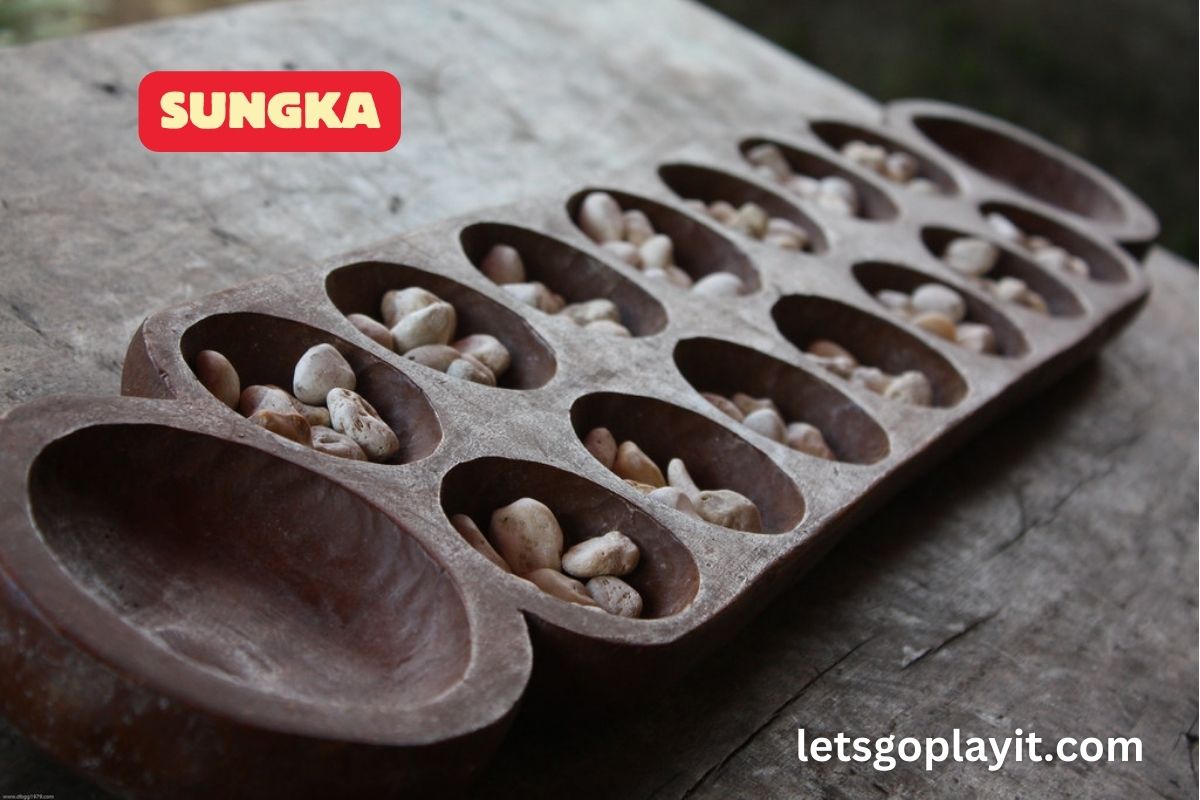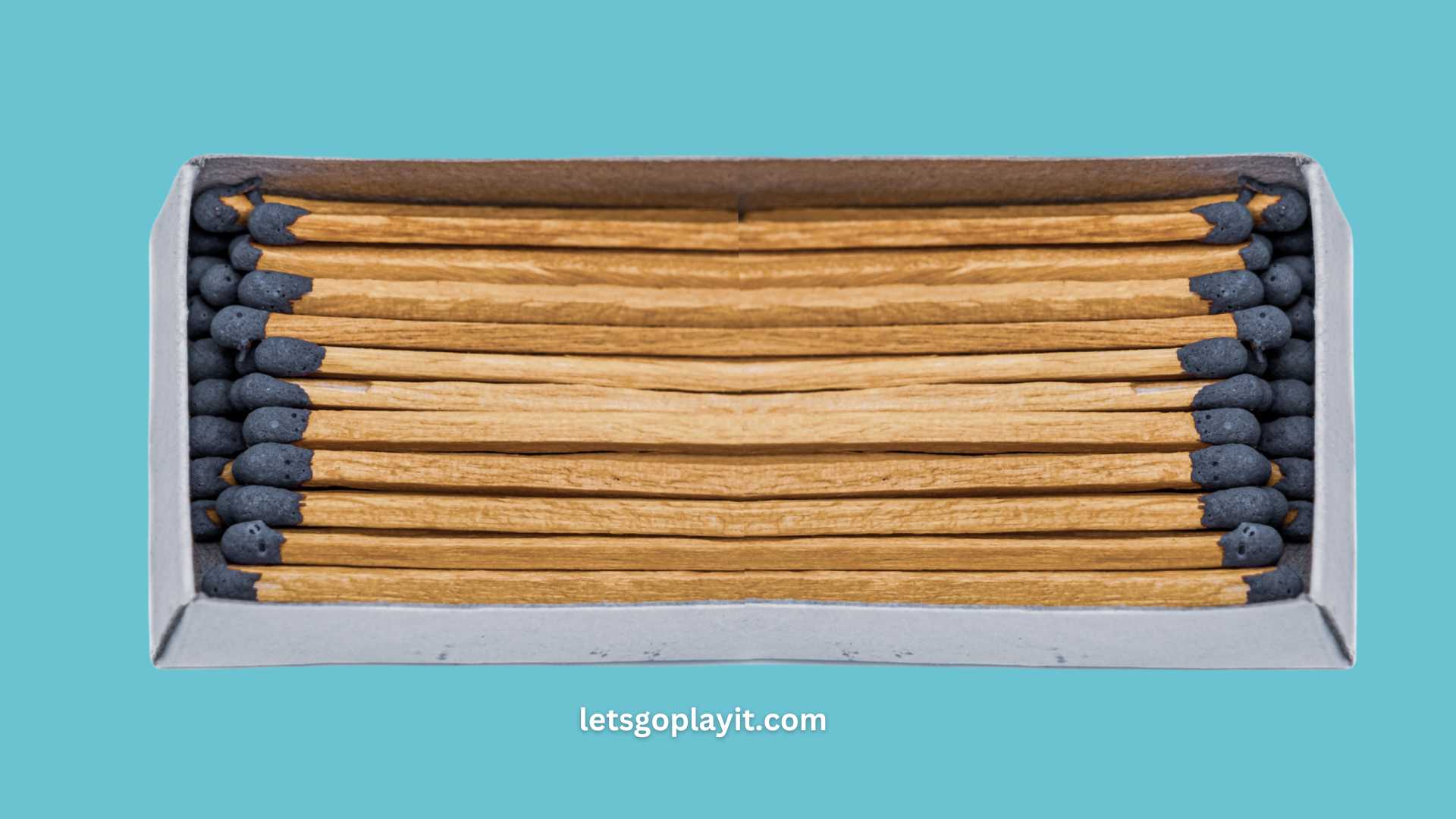Hello, Louie from letsgoplayit.com here! Today, I’m thrilled to share with you the ins and outs of a traditional Filipino game that has captured hearts across generations: Sungka. This isn’t just any board game; it’s a cultural gem that connects us to our roots and challenges our strategic minds.
Possible Origin of “Sungka”
Sungka, part of the Mancala family of board games, has a storied history. Its roots may trace back to around 1400 BC, making it one of the oldest games in the world. Sungka likely reached the Philippines from Indonesia, and its name resembles the Indonesian word for a similar game.
How to Play “Sungka”? Gameplay Explained
The essence of Sungka is simple yet strategic. You’ll need a Sungka board and 98 pieces like shells or stones. The board is set horizontally between two players, each controlling seven holes on their side and a larger hole, the ‘head’, on their right. Players distribute their pieces in these holes and aim to accumulate as many pieces in their head as possible. The game ends when no pieces are left in any holes, and the player with the most pieces in their head wins.
- Board and Pieces: First, get your Sungka board ready. This board has a total of 14 small holes (7 per side) and 2 larger holes at each end, called ‘heads’. You also need 98 pieces, which can be shells, stones, or seeds.
- Initial Placement: Distribute the pieces evenly across the small holes, placing 7 pieces in each hole. The heads remain empty at the start.
Gameplay Mechanics
- Starting the Game: Players sit facing the board. Each player’s side of the board has 7 holes, and their head is the larger hole to their right. To start, each player chooses one of their holes and scoops up all the pieces in it.
- Moving Around the Board: Moving clockwise, the player drops one piece in each subsequent hole, including their head, but not their opponent’s head.
- Continuing Turns: If the last piece lands in your head, you get another turn. If it lands in a hole containing pieces, you scoop up all pieces from that hole and continue distributing them.
- Capturing Pieces: If the last piece lands in an empty hole on your side, you capture all pieces in the directly opposite hole on your opponent’s side, placing them in your head.
- Ending a Turn: Your turn ends if the last piece lands in an empty hole or in your opponent’s hole.
Objective and Winning the Game
- The goal is to collect as many pieces in your head as possible.
- The game ends when all the small holes are empty.
- The player with the most pieces in their head is declared the winner.
Tactical Considerations
- Strategic Choices: Choose which hole to start from wisely. Starting from different holes can lead to different outcomes and opportunities to capture your opponent’s pieces.
- Anticipating Opponent’s Moves: Pay attention to your opponent’s side of the board to predict and counter their strategy.
- Managing Resources: Be mindful of how many pieces are left in each hole, as this affects your potential moves and captures.
This step-by-step guide gives you a solid foundation to start playing Sungka, a game that requires not just an understanding of the rules, but also strategic thinking and foresight. As you play more, you’ll develop your unique tactics and strategies, making each game a fresh and exciting experience. Enjoy your journey into this traditional Filipino game that’s rich in culture and intellectual challenge!
Preparations Before Playing “Sungka”
Before diving into Sungka, ensure you have a Sungka board and 98 game pieces. Distribute seven pieces into each hole (excluding the heads). Understanding the rules and the board layout is crucial. Remember, the lower holes belong to you, and the upper holes belong to your opponent.
Variations and Challenges in Playing “Sungka”
Sungka isn’t just about moving shells around. It’s about outsmarting your opponent. A variant called Chopstick Sungka requires using chopsticks to move the counters, adding a layer of manual dexterity to the game. Developing strategies, like choosing the right hole to start from and anticipating your opponent’s moves, adds depth to this seemingly simple game.
Age Range for Sungka Players
Sungka is wonderfully inclusive; it’s suitable for all ages. From young kids learning counting to adults enjoying a strategic challenge, Sungka is a game for everyone. It’s an excellent way for families to bond and for children to develop cognitive skills.
Gameplay Duration of “Sungka”
A game of Sungka can vary in length. It can be a quick, engaging match lasting around 15-30 minutes, perfect for a family game night or a friendly competition. The duration often depends on the players’ skill levels and strategies.
Similar Games in Other Countries
Sungka has its counterparts across the globe. It’s similar to ‘Congklak’ in Indonesia, ‘Congkak’ in Malaysia and Brunei, and ‘Mak Khom’ in Thailand. These games, though bearing different names, share similar rules and objectives, reflecting a shared cultural heritage.
Other FAQs About Sungka
- Playing Sungka Online: Yes, you can play Sungka online, with various apps and websites offering digital versions of this classic game. Click here to download.
- Playing for Real Money: Some platforms allow Sungka to be played for real money, adding an extra thrill to the game.
- Suitability for Competitive Play: Sungka isn’t just for casual play; there are competitions and tournaments, highlighting its strategic depth.
Conclusion
Sungka isn’t just a game; it’s a journey through culture and history, a challenge for the mind, and a delight for all ages. So, whether you’re revisiting your Filipino heritage or exploring new cultural experiences, Sungka offers a captivating blend of tradition, strategy, and fun. Let’s cherish and pass on this beautiful aspect of our culture. Happy gaming!





2 thoughts on “Sungka”